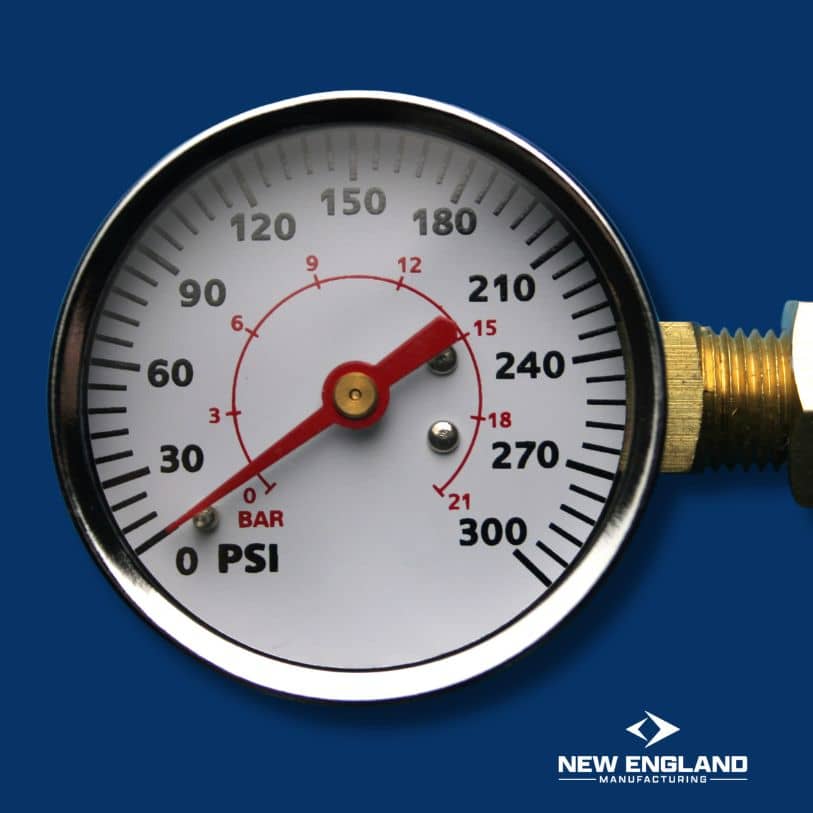How to read a pressure gauge?
What is a pressure gauge?
The pressure gauge is a device used to measure the pressure of any fluid (liquid or gas) flowing through a pipe or tube. They are the most common equipment used in industrial facilities and manufacturing units like pharmaceutical companies, oil and gas units, food and beverage manufacturing units, etc.
New England Manufacturing LLC (NEMFG) is a 100% veteran-owned and operated company specializing in manufacturing and distributing the best quality pressure gauge and other water flow testing equipment.
This organization is known for their top – notch customer service and commitment towards its clients. Some of their top products include high-quality fire hydrant and water flow test pitot gauge kits, serving professionals such as fire protection engineers, insurance underwriters, fire departments, sprinkler companies, and water works systems.
Steps on how to read a pressure gauge:
There are 4 major steps to be followed to read the pressure gauge accurately. It maintains accurate measurements, efficiency of readouts, and proper functioning of the pressure gauge, and should follow the right and chronological steps. These are summarized below:
1. Understanding the type of gauge we are dealing with:
There are two types of gauges, either analog or digital. The former has a dial and a needle pointing at the valve. The reading is analyzed based on where the needle is pointing.
2. Identifying the pressure range:
Most of the pressure gauges have minimum and maximum pressure ranges displayed on the dial or somewhere in the display. It is important to identify this range.
3. Understanding the units:
It is crucial to identify what units the pressure gauge display is capturing. It includes pounds per square inch (psi), bar, kilopascals (kPa), or atmospheres (atm).
4. Reading the gauge (Either analog or digital):
Here is a step-by-step guide on how to read a pressure gauge
- Interpreting the Analog Gauge:
-Find the Needle: The needle indicates a number on the dial.
-Estimate Between Graduations: If the needle falls between two markings, approximate its position. For example, if the needle is centered between two lines, approximate the value.
-Utilize the Dial Marks: The meter will feature minor markings that denote portions of the complete range. Focus on these to obtain a precise measurement.
-Verify Zero Calibration: Confirm that the gauge reads zero when no pressure is present. If that’s not the case, it might require recalibration for a precise gauge reading.
- Interpreting the Digital Readout:
Just look at the number shown on the display. This will directly display the pressure in the chosen units.
5. To check the limits:
One needs to understand the safe limits to see if the pressure is within the appropriate limits.
Vital information regarding various systems, such as air conditioning and tires, is provided by various pressure gauges. For accurate readings, it is important to make sure the gauge is in the appropriate range and units.
Here is a brief guide on how to effectively read several kinds of pressure gauges:
– Tire Pressure gauge: Used to measure tire air pressure, usually expressed in pounds per square inch, or psi. The current tire pressure, which should be in line with the manufacturer’s suggested value, can be seen on a digital or analog tire pressure gauge.
-A blood pressure gauge: Determines the blood pressure inside your arteries. A manual or digital sphygmomanometer shows the diastolic and systolic pressures in millimeters of mercury. The gauge reading will display two numbers: the diastolic, or pressure during the interval between heartbeats, and the systolic, or pressure during a heartbeat.
-Gauges for AC pressure: The refrigerant pressure in an air conditioning system is measured by AC gauges. Both high and low-side measurements are present in these systems. If the pressure is within the typical range for cooling, it can be ascertained with the use of an R134a pressure chart. Depending on the system’s temperature, the low side usually reads between 30 and 50 psi, while the high side usually reads between 150 and 250 psi.
-Pressure in the atmosphere: The pressure that the Earth’s atmosphere exerts is known as atmospheric pressure, and it is expressed in psi. At sea level, the typical atmospheric pressure is roughly 14.7 psi.
Points to keep in mind while reading the pressure gauge:
- Recognizing and comprehending the gauge dial is essential for obtaining accurate pressure readings in various contexts. The gauge dial usually features major units (larger increments) and minor divisions (smaller increments), which assist in reading precise pressure values. The needle or pointer shows the pressure on the scale, which can be either analog or digital.
- In analog gauges, the needle’s movement on the dial is affected by the pressure applied to a diaphragm within the gauge. Understanding the pressure increments and scale range is key for accurate interpretation. Digital gauges offer direct pressure readings, making them simpler to read, but users still need to be aware of the units (e.g., psi, bar).
- Correctly interpreting and recording pressure readings is crucial for data logging and future reference. Noting the date and time of each measurement helps maintain organized records, which are important for ongoing maintenance and troubleshooting. Familiarity with the gauge dial also helps identify potential system problems or calibration requirements, particularly when pressure readings deviate from expected levels.
- A solid understanding of a gauge dial is particularly important in confined spaces, where obtaining an accurate reading may be more challenging. Incorrect readings can result in subpar system performance or equipment damage. Thus, knowing how to read a gauge dial is fundamental for accurate pressure measurements, effective troubleshooting, and maintaining operational efficiency.
Types of pressure gauge:
There are several varieties of pressure gauges, each with special characteristics appropriate for a certain use. Here is a summary of a few typical kinds of pressure gauges and gauge readings:
1. Gauge of Bourdon Tube Pressure:
One of the most popular mechanical pressure gauges is this one. When pressure is applied, the curved Bourdon tube that makes up this device straightens. A pressure reading is obtained by moving a pointer on a dial due to the tube’s deflection. Industrial pump skids and pumps are among the many industrial applications for these dependable gauges.
2. Gauge of Bellows Pressure:
An expanding bellows element, which changes shape in response to pressure, is used in a bellows pressure gauge. This kind of gauge is frequently seen in smaller, more compact systems and is perfect for sensing low pressures. Because of its adaptable architecture, it can be used in delicate applications such as fluid systems with low pressure.
3. Gauge of Diaphragm Pressure:
A metal or elastomer diaphragm in this gauge expands when pressure is applied, and the deflection is translated into a value that can be read. When medium-to-high pressures need to be monitored in chemical processing equipment and industrial pump skids, diaphragm pressure gauges are frequently utilized.
4. Digital Gauge of Pressure:
Electronic sensors are used by a digital pressure gauge to measure pressure and show it numerically. With features like data logging, remote monitoring, and simple calibration, these gauges are incredibly accurate. In sophisticated systems where real-time pressure data is essential, they are frequently utilized.
5. U-shaped tube and manometer:
A manometer is a tool for measuring pressure, usually by looking at the variation in liquid levels inside a U-shaped tube. This kind of gauge is frequently employed in low-pressure or laboratory settings.
Conclusion
From basic mechanical gauges to sophisticated digital sensors, each type of pressure gauge offers unique benefits depending on the application, guaranteeing precise pressure monitoring in various systems. And the efficiency and accuracy of measurements and readouts depend upon ‘how we use the pressure gauge’ under different conditions, like the type of fluid, the temperature of the fluid, etc.

Mark R.
With a strong foundation in industrial safety and fire protection systems, Mark R. specializes in creating clear, technical, and compliance-driven content. Writing for SafeTech Reports, he covers topics such as fire hydrant testing, PPE protocols, emergency procedures, and smart technology integration in safety systems. His work ensures that professionals stay informed on the latest regulations, best practices, and emerging trends in safety and infrastructure maintenance.
Get in touch
We usually respond within 24 hours
Need Reliable Water Flow Test Equipment?
For over 70 years, New England Manufacturing has been the trusted source for fire hydrant and water flow testing kits. From pitot gauge kits to custom test kits, we provide precision, durability, and expert calibration to meet your needs.
- Custom-built test kits
- High-quality pressure gauges
- Reliable calibration services


